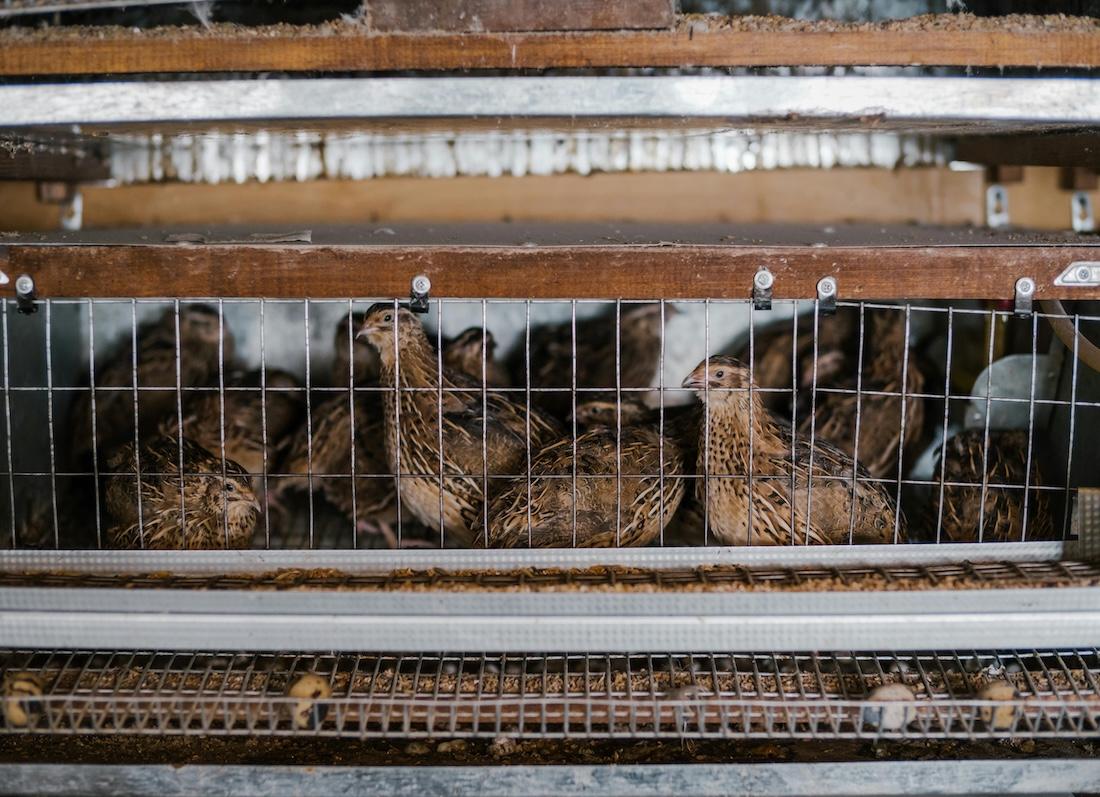Quail are one of the easiest ways to start raising livestock on a small scale. They grow fast, take very little room, and reward you with nutrient-dense eggs and lean meat.
For Texans with limited space—or city ordinances that restrict chickens—quail make a surprisingly practical alternative. Their quiet nature and short lifespan mean you can complete an entire life cycle in just a few months, gaining hands-on learning without a major investment.
From suburban backyards to educational gardens, quail fit almost anywhere. For a deeper look at why these birds are booming statewide, see Why These Tiny Birds Are a Big Deal in Texas.
🐣 Choosing Your Breed
The two most common choices for beginners are Coturnix and Bobwhite quail.
- Coturnix (Japanese Quail) — Fast-growing and docile, Coturnix hens begin laying eggs in just 6–8 weeks and may produce up to 300 per year. They’re non-native, so no special state permit is required for egg or meat sales.
- Bobwhite (Northern Bobwhite) — A native Texas species known for its whistle and role in wildlife restoration. These quail take longer to mature and may require a Commercial Game Bird Breeder License if you plan to sell live birds or meat.
👉 Learn more in Coturnix vs Bobwhite: What’s the Difference?
🏠 Housing Basics
Quail housing can be simple, but good design keeps them safe and productive.
- Space: At least 1 sq ft per bird; more in summer heat.
- Layout: Low ceilings prevent head injury when startled.
- Ventilation: Critical in Texas heat—use shade cloth, open mesh, or barn airflow.
- Cleanability: Removable trays simplify waste control.
- Security: Predators (raccoons, snakes, hawks) will test every gap—use ½-inch hardware cloth.
🛠 Check local ordinances before building; some cities allow quail where chickens are restricted.
🌱 Feed & Water
Quail need a high-protein diet to thrive:
- Starter Feed: 24–28% protein (first 6 weeks).
- Grower or Layer Feed: 18–22% protein thereafter.
- Calcium: Provide crushed eggshell or oyster shell for layers.
- Water: Keep shaded, clean, and cool—quail drink frequently in triple-digit heat.
Quail convert feed to eggs with remarkable efficiency—learn why in Feed Efficiency in Quail: Why They Outperform Chickens.
🥚 Egg Production & Breeding
Coturnix hens begin laying at 6–8 weeks, with steady output under 14–16 hours of light daily.
Incubation Basics
- Store fertile eggs point-down at 55–65 °F until ready.
- Incubate for ~17 days at 99.5 °F and 45–50 % humidity.
- Move to brooder at hatch for warmth and starter feed.
See From Egg to Hatch: The Science of Quail Incubation for a step-by-step look. For food safety tips, see How to Store, Wash, and Handle Quail Eggs Safely.
💸 Selling or Sharing Your Eggs
In Texas, you may sell ungraded or unwashed Coturnix eggs directly to consumers if they are kept clean and labeled with your farm name and collection date. Always verify county rules before selling to markets or restaurants.
- Coturnix quail: No permit required for direct sales.
- Bobwhite quail: TPWD Commercial Game Bird Breeder License required for sale of live birds or meat.
Good markets include farmers markets, CSA pickups, local shops, and homeschool or culinary networks. Clear labeling and transparent handling earn repeat buyers.
🧺 Waste, Compost & Byproducts
Quail manure is a powerful fertilizer but must be aged 2–3 months before garden use. Mix with leaves or straw to balance nitrogen. Crushed eggshells add calcium to soil or feed, and feathers compost easily.
Integrating quail waste into a garden compost system creates a zero-waste loop perfect for small urban farms and school gardens.
🌞 Managing Texas Climate
- Summer: Provide shade, cross-breeze, and frozen water bottles.
- Cold Snaps: Short but harsh—add bedding and wind barriers.
- Humidity: Coastal Texas needs extra ventilation to prevent mold and ammonia.
Predators are persistent year-round; secure doors and check wire daily.
🧩 Getting Started Step by Step
- Check local ordinances and HOA rules.
- Choose breed and source from reputable hatchery or farm.
- Build a secure, ventilated pen.
- Purchase feed, waterers, and bedding in advance.
- Start small (6–12 birds).
- Track feed use and egg production.
- Compost manure and reuse shells.
- Expand only after your first successful season.
❓FAQ
How many quail should a beginner start with?
Six to twelve birds is a comfortable starting flock.
Do I need a permit to raise quail in Texas?
Not for Coturnix quail raised for eggs or meat. Raising native Bobwhites for sale or release requires a TPWD Game Bird Breeder License.
Can quail live outdoors year-round in Texas?
Yes—with shade and ventilation for heat and wind protection in winter.
How long do quail live?
Usually 2–3 years; hens lay most heavily in the first 18 months.
💬 Related Reading
- Coturnix vs Bobwhite: What’s the Difference?
- Feed Efficiency in Quail: Why They Outperform Chickens
- Why These Tiny Birds Are a Big Deal in Texas
- From Egg to Hatch: The Science of Quail Incubation
- How to Store, Wash, and Handle Quail Eggs Safely
📚 References
- Texas A&M AgriLife Extension Service (2024). Quail Production / Farming / Industry.
- Texas Parks & Wildlife Department (2023). Quail Populations Recovering, Strongest in Years.
- Texas Parks & Wildlife Department (2024). Commercial Game Bird Breeder License Information.
- Texas Statutes (2024). Parks and Wildlife Code – Chapter 45: Game Bird Breeder’s License.
- Mississippi State University Extension (2023). Raising Bobwhite Quail for Commercial Use.
- National Center for Appropriate Technology (ATTRA) (2022). Small-Scale Livestock Production Guide (includes quail).
- Texas A&M University (2023). Producing Quail for Home Consumption.
- East Texas A&M University (2024). The Quail Research Laboratory / Super Quail Project.





